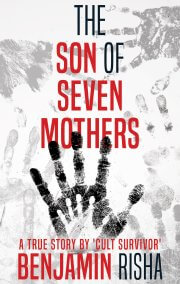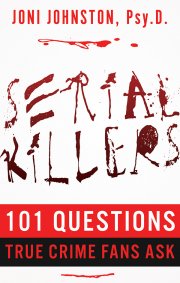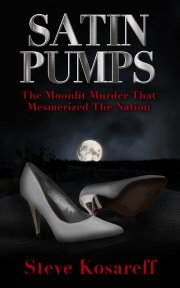 As a writer of true crime, it’s all about the research. It doesn’t matter if I’m writing a book or a three thousand word article it’s always about the official record. It begins and ends with the record. Of course, if you’re lucky, you’ll have living witnesses to interview, but even here everything gets filtered through the record. Not that the official record is infallible, mind you, because it’s not. But the better you know the case, the easier it is to spot the common mistakes humans make as they’re recording events that will become the permanent record. And, of course, once you have said record, the “memory” of that record never fades. And long after all participants are gone, the record is all one will have to seek out additional truths, or perhaps, confirm or refute “evidence” discovered at a later date.
As a writer of true crime, it’s all about the research. It doesn’t matter if I’m writing a book or a three thousand word article it’s always about the official record. It begins and ends with the record. Of course, if you’re lucky, you’ll have living witnesses to interview, but even here everything gets filtered through the record. Not that the official record is infallible, mind you, because it’s not. But the better you know the case, the easier it is to spot the common mistakes humans make as they’re recording events that will become the permanent record. And, of course, once you have said record, the “memory” of that record never fades. And long after all participants are gone, the record is all one will have to seek out additional truths, or perhaps, confirm or refute “evidence” discovered at a later date.
What exactly is the official record, you might be asking? The official record is the entire written record of a case, containing police reports, autopsy reports, witness statements, maps, photographs, diagrams, and just about anything pertaining to the victims, their killers, and of course, if there’s been a trial, the court transcripts. Depending on the case, however, there could be relatively little paperwork to go through, but for many of the high profile murders, the case evidence may fill an entire room: a daunting task to tackle for any true crime writer, to be sure, but well worth it in the end.
And very often, in the midst of this voluminous material, out will pop a box labeled real evidence. Whenever this happens, I always lean back in my chair and take a deep breath, as I know I’ll be seeing objects directly connected to the homicide, and for me, it’s like a mini trip into the past. And unlike the reams of paperwork which makes up the bulk of any murder case, real evidence always has a different feel to it, and it’s not for the squeamish or the easily disturbed.
In the case of the real evidence I viewed while researching my book, Vampire: The Richard Chase Murders, it was far more than even I expected to see. As I opened this particular box (number 13 of 14 boxes total), I could see it contained items of real evidence. Some of this evidence was rather routine as in the .22 caliber brass shell casings found in the street in front of the Ambrose Griffin residence (Chase killed Griffin in a drive-by shooting). And then the not so routine, as in the mangled bullet removed from Ambrose Griffin’s body during his autopsy; just a tiny piece of lead really, but it took away all of his tomorrows and produced an incalculable grief for the family. I remember how odd it felt holding that small bullet in my hand, and what an impact it had on me a little later as I wrote the chapter on Mr. Griffin’s demise.
There were other oddities, of course, as in the yogurt cup Chase used to drink human blood at the scene of the Teresa Wallin murder; and the wallet of James Meredith, who was killed because he was simply in the wrong place at the wrong time. There was also the box of .22 shells, taken from Chase after his arrest. Surprisingly, it looked almost new, yet it’s been in police storage for (at the time) almost thirty-four years.
But perhaps the most unnerving item of the lot was discovered in a small bag. It was another mangled bullet, but this time with dark female hair intertwined with it. The bullet, of course, had entered the head of this unfortunate at a high velocity, impacted the hair first, and both the projectile and the hair entered the victim’s skull and was retrieved at autopsy. Shaking my own head, I quickly placed it back in the box, feeling a bit of repulsion just handling it. Indeed, I almost felt like an intruder, peering into something not meant for any eyes beyond the autopsy room.
As you might suspect, I’ve seen many things during my years writing true crime, including crime scene pictures too horrific to ever be released to the public. I even wrote my book, The Bundy Murders: A Comprehensive History, because I had Ted Bundy’s murder kit in my possession for a time. But viewing this particular artifact left me wishing I’d missed it.
I know, it’s just a human emotion, and one we true crime writers should jettison the moment we experience it, but that’s the way it is sometimes handling real evidence.




 Join our email list
Join our email list
I lived in Sacramento during this frightening time. The EAR struck in my neighborhood and only years later did I find out one victim was the teenaged sister of a close friend of mine. And of course there were the murders by Gerald and Charlene Gallegos. Richard Trenton Chase went to HS with my neighbor who said he was always strange and had a fascination with killing birds. I am curious to know what happened to his family and if any of them were mentally ill. There aren’t any books written about this guy and even this book was very short.
Hi Tina,
First, thanks for your contact, comments, and question. 🙂
Yes, the main detective I worked with while writing the book (Bill Roberts), told me all about the East Avenue Rapist, as he worked that case as well. I’ve written three books about Ted Bundy, and while Bundy was living in Salt lake city, Utah, there was a guy running around sexually assaulting women, and they referred to him as the First Avenue Rapist. Bundy lived at 565 First Avenue at the time. Weird.
As to Chase’s family, I do believe Richard’s mother struggled with mental issues, based on her actions as revealed in the official record; and I point this out in the book. I don’t believe his father or Chase’s sister had any problems in that area. As far as I know, the family has kept an extremely low profile since all of this happened, and in fact, I don’t even know if the dad is still alive.
As to the length of the book: One thing I wasn’t going to do is “pad” the book with useless information. The book almost exclusively comes from the official written record. I do include a good deal of testimony from Bill Roberts, and the testimony of others as well. The book, although rather small in length (142 pages, I believe), is crammed with facts, and that’s the important thing. So, I consider it a quick, but thorough read. Bill Roberts (one of the main detectives on the case),even said to me that he’d learned some things about the case by reading the book, and that was nice.
You’re correct, there hasn’t been a lot written on Richard Chase. Beside my book, there is a self-published work out there, but I believe it’s long out of print. And then there was a book written by the lead detective on the case by the name of Ray Biondi. and I mention his book in “Vampire”, and that you can purchase on Amazon or another venue, as a mass market paperback.
I hope this helps.
Take care,
Kevin